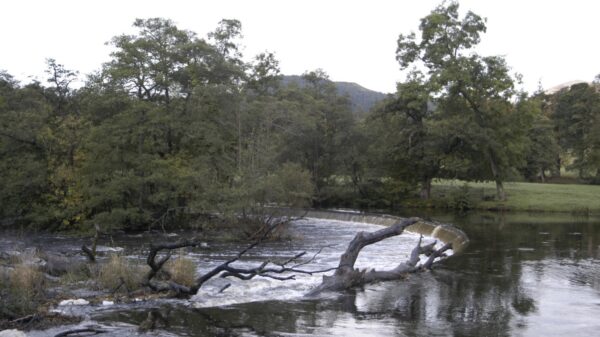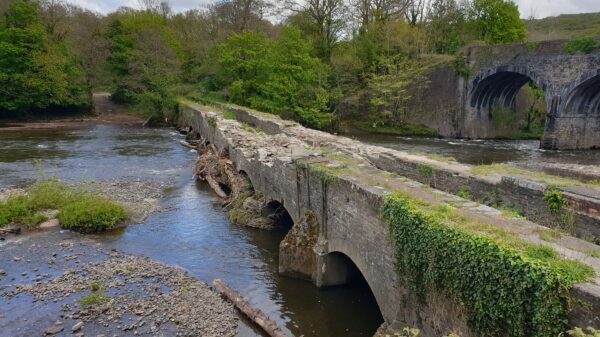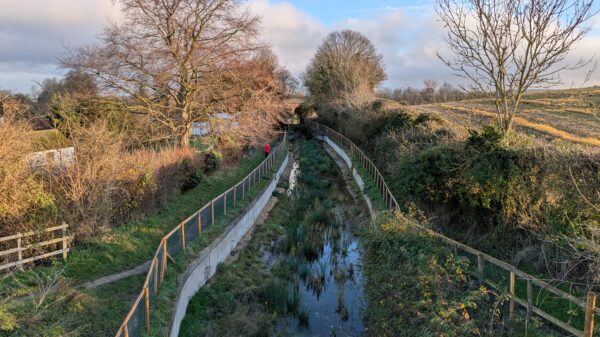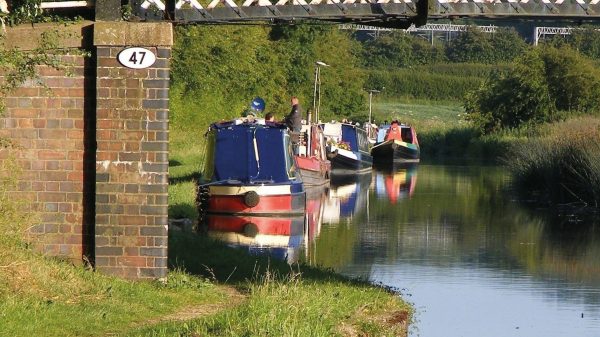You never know what you may come across, from the familiar sights of rabbits and foxes to a rear glimpse of badgers or otters. Here is our guide to spotting mammals along the waterways.
Water Vole
Water voles are also known as water rats, but they are different animals. Water voles have rounder noses, deep brown fur, short ears and their tails, paws and ears are all covered in hair. Water voles often like to sit and eat vegetation such as waterside plants and stems in the same places. Water voles live in burrows within the banks of rivers, ditches, ponds and streams and like to be beside slow moving, calm water. They are experts in swimming and diving.
Interesting fact: Every day a water vole will consume approximately 80% of its body weight. (Source: Nottinghamshire Wildlife Trust)

Photo taken by Peter Trimming
Otter
Otters can live both on land and in water. Otters are found on river banks, lakes, streams and in some coastal areas. They mainly eat fish but also frogs, crab and even small mammals and birds. They have features that enable them to live on the water such as a thick coat of fur which allows them to keep warm in freezing cold water, webbed feet, and they can close their ears and nose whilst swimming.
Interesting fact: An Otter can remain under water for up to 4 minutes and can dive up to 300 feet in search of food. (Source: Otter World)

Photo taken by Catherine Trigg
Dormouse
Dormice have a golden coat with a thick furry tail and large black eyes. They are nocturnal creatures and can spend up to three-quarters of their life asleep; they hibernate when food is low to conserve energy. Their diet consists of buds, hazelnuts, berries and insects. In Britain, dormice are mainly found in the southern counties.
Interesting fact: Dormice can spend their entire lives high up in the trees without ever touching the ground. (Source: The Wildlife Trusts)

Photo taken by H. Osadnik
Hare
Hares are up to 70cm long and weigh around 7kg. They have long ears with black tips, a white underbelly and tail with big eyes on either side of their head. Compared to rabbits, hares have a more upright posture and longer limbs. They can be seen, in woodlands, hedgerows or arable land. Their diet consists of plants, crops, berries, fungi and roots. Unlike other mammals, hares do not hibernate in the winter but instead store large amounts of fat in their bodies.
Interesting fact: A hare’s ability to run fast can put distance between themselves and danger. With running speeds of 35 miles per hour they are the fastest land mammal in the UK (Source: Nottinghamshire Wildlife Trust)
 P
P
hoto taken by Bohringer Friedrich
Badger
Badgers live in groups in underground tunnel systems created by themselves or other badgers. These are called setts and can be made on the embankments of canals. Badgers have black faces, white markings and a light coloured underbelly. They are nocturnal creatures and their diet consists mainly of earthworms but they also like to eat insects, bluebell bulbs and elder berries. Badgers are most easily seen near their setts or searching for food at night.
Interesting fact: Despite being nocturnal, badgers have poor eyesight but have an excellent sense of smell and acute hearing. (Source: Nottinghamshire Wildlife Trust)
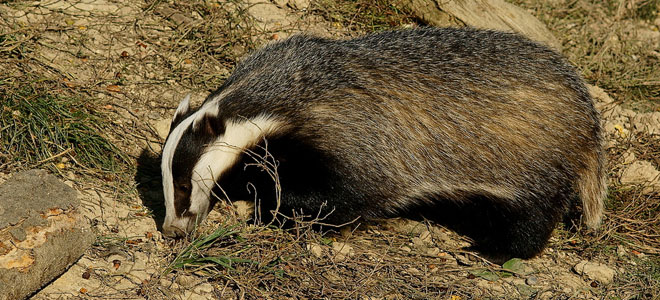
Photo taken by Peter Trimming
Stoat
These mammals are brown in the summer but can turn white in the winter, except for the tip of their tails which is black. They can be seen around hedgerows, paths, walls, ditches and like to stay near to an area with lots of food around. Stoats are predators eating birds, reptiles and small mammals and also take chicken eggs. Stoats mostly move around at night and can sometimes be seen in the day but be careful not to startle them as they can quickly disappear!
Interesting fact: Stoats can kill adult rabbits that are much larger in size to themselves with a bite to the base of the skull. (Source: The Wildlife Trusts)

Photo taken by Keven Law
Wood Mouse
Wood mice are small mammals with a light brown coat and big eyes and ears. They can be mostly found in woodland areas looking for food such as seeds from grasses, herbs and trees or buds, shoots, berries and insects. Wood mice usually live for no longer than two years because they get eaten by animals including foxes, weasels and owls.
Interesting fact: With approximately one wood mouse for every two people in the UK, they are one of its most common small mammals. (BBC Nature)
 P
P
hoto taken by Mike Pennington
Weasel
Weasels are smaller in size to stoats and do not have a black tip on their tails. They are able to adapt to live in many places including grassland and woodlands. Having long thin bodies allows them to hunt for food such as mice, voles and shrews in their burrows underground.
Interesting fact: A weasel has its own territory of between five and eight hectares and during the night this mammal can travel up to 2km hunting for food. (Source: Nottinghamshire Wildlife Trust)

Photo taken by Keven Law
Fox
Found in either the city or countryside, foxes do not hibernate in the winter months and are most likely to be seen at dawn or dusk hunting for food. They are small mammals with a reddish brown colour coat, pointed ears and a bushy tail and can produce 28 different calls. Foxes are known for hunting poultry but can eat anything they come across being omnivores. Foxes stay and live together in groups, during August to November any cubs within the group leave to find new territories.
Interesting fact: Male foxes bark but females make a spine-chilling scream, this can be heard often in the winter when their courtship takes place. (Source: The Wildlife Trusts)

Photo taken by Laubenstein Ronald, U.S. Fish and Wildlife Service
Rabbit
Rabbits are a familiar sight in Britain and can be seen in fields and woodland during the day and night, usually in large groups. Similar to hares they have long sensitive ears to alert them of possible danger and eyes on either side of their heads allowing 180 degrees of vision. Rabbits out in the wild often have grey hair and white bellies with a fluffy tail. As a warning signal to other rabbits that predators are about, rabbits thump their back legs. Their diet contains any vegetation such as grasses, tree bark, small herbs and agricultural crops.
Interesting fact: A rabbit thumping it’s back legs sends a warning to others that one of their numerous predators is about. (Source: BBC Nature)

Photo taken by ForestWander
Take a look at our guide on Ten Birds to Look Out For Around the Waterways.
Find out more about wildlife by the waterways.
Sources
BBC Nature
The Wildlife Trusts
Nottinghamshire Wildlife Trust

